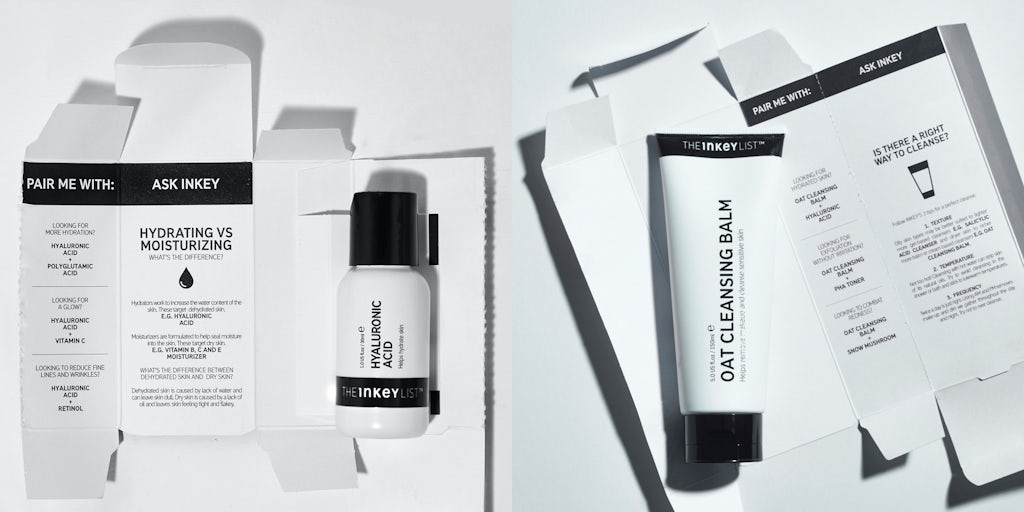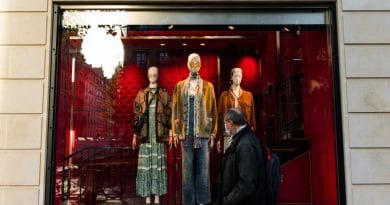How to Market an Affordable Skin Care Brand | The Business of Beauty, BoF Professional
NEW YORK, United States — Fani Mari says she is spoilt for choice when it comes to skin care products at every price point.
“There are so many more affordable brands that deliver great ingredients and really good products,” said the 27-year-old freelance journalist and content creator. Mari added that she’s particularly partial to The Inkey List’s salicylic acid cleanser, which she said worked just as well as a similar product from another brand that cost three times as much.
A growing number of consumers like Mari, confronted by cleansers, creams and serums touting identical ingredients sold for vastly different prices, are picking the cheaper option over the luxe alternative. Brands like The Inkey List, founded in 2018 by two former Boots employees, Colette Laxton and Mark Curry, have played into the trend with no-frills packaging and product names that sound straight out of a chemistry textbook.
The Inkey List’s name is inspired by the INCI list (International Nomenclature of Cosmetic Ingredients), an international system used to name and identify cosmetic ingredients. Demystifying product labels is part of the brand’s mission, Laxton said.
“We truly believe that better information drives better decisions,” Laxton said.
Even so, any brand can fill bottles with widely available ingredients like hyaluronic acid or Vitamin C and charge affordable prices. The budget brands finding success today nevertheless manage to convince consumers that they’re still buying something special. After all, drugstore shelves are filled with cheap skin care products that the beauty power-shopper would never consider buying.
But how exactly can budget-friendly brands convince customers they are cheap and effective — and not just cheap?
Be Transparent
Brands used to list ingredients in tiny font on the back of a label because their customers couldn’t tell niacinamide from hyaluronic acid (and mostly didn’t care). That’s no longer the case; many consumers spend hours learning about ingredients from beauty influencers and websites before heading to Sephora. They are often shopping for product formulas rather than specific brands. A bottle that advertises its active ingredients, however obscure, is more likely to catch the self-educated beauty shopper’s eye.
Good Molecules touts its “nothing to hide” labels, which lists the exact percentages of ingredients used in a product in an easy-to-read table. The implied pitch to consumers is that more-expensive brands’ marketing obscures what’s actually inside the bottle.
“That’s why we try to show all the ingredients,” said Co-Founder Nils Johnson. “Go back and ask that $100 brand that you buy a similar product from to show you what’s in their products. That’ll probably be a little disheartening.”
Getting into detail about a product’s formula also helps consumers weed out “marketing ingredients,” which might sound revolutionary but have little practical use, or appear in only trace amounts, said Marisa Plescia, a Minnesota-based cosmetic chemist.
“Every brand has their kind of marketing ingredient that their whole line will have,” she said. “It would have carrot seed oil or aloe that could be at a level of .01 percent.”
User-Driven Marketing
Low-priced, ingredient-first brands often rely on their customers to spread the word. That approach is cheaper, of course, but it also reflects how consumers learn about new beauty products. A subset of consumers might trust an influencer’s recommendation over a dermatologist’s.
“That clinical approach or clinical marketing is not super appealing,” said Tiara Willis, a 19-year old makeup artist and licensed aesthetician. “I think when they use influencers or people that Gen-Z can actually relate to, they get more return on investment.”
Ashley Guy, a 27-year old Social Services Coordinator from Portland and a Good Molecules customer, said it’s important for brands’ marketing to reflect customers like her.
“I think they need to show real, raw, transparent photos of people,” she said. “I’m looking for dark skin models.”
Lately, these user-generated campaigns tend to take root on TikTok. Good Molecules launched their account with the platform last month. Older brands are finding success there too: CeraVe has seen sales soar as TikTok put the drugstore mainstay in front of a new, younger audience. Garnier’s paid campaign, which encouraged users to “rewind their routine” (posting a video that runs backwards) using the brand’s micellar water for a chance to win $300 worth of products, has garnered 2.4 billion views.
“We’re seeing a big wave on what we call micro-influencers or just everyday people,” said Greg Hui, senior vice president of marketing at Garnier. “We want to showcase people that our consumers can relate to.”
When brands stray away from their core identity, it usually doesn’t go well.
In the early days of The Inkey List, Laxton said the pressure to grow led them to work with bigger influencers that turned out to not be a great fit.
“We’ve been burned a couple of times where we’ve gone ‘oh, they seem really cool’ and then their values don’t align to ours and the content they do just feels like they completely missed exactly what we stand for,” said Laxton.
Packaging Matters
Packaging is usually the first thing to grab a consumer’s attention and convey what a brand is all about – even when it’s an unadorned black-and-white box.
At The Inkey List, Laxton said the brand’s monochrome packaging conveys the idea that skin care should be for everybody. Instructions and information about a product’s place in a skin care routine are right on the box.
Other brands like Good Molecules strive to hit the sweet spot of having products that look expensive but don’t drive up the cost. The brand also uses glass containers where possible as a sustainable alternative to plastic.
The Product Has to Work
When it comes down to it, marketing a product is easier to do when it simply works. Consumers might buy a cheap product on impulse, but will come back for more if they find it effective.
“If you are using a product that’s maybe not as expensive as something else and it’s working for you and you like how your skin is looking then keep using it,” said Plescia, the cosmetic chemist.
Good Molecules constantly reformulates products, Johnson said.
“We approach product development similar to software, where our goal is to iterate until we have the best product,” he said.
Brands agree that while affordability is a good thing, it can’t be the sole factor that’s attracting customers.
“A consumer is never going to go to your brand, [just] because it’s cheap,” Laxton said. “They’re going to get your brand because they believe in the same things that you do and the efficacy of the products is there.”
Or as Garnier’s Hui puts it, “Even if it’s like $5… it still has to work.”
THIS WEEK IN BEAUTY
Chinese beauty unicorn Yatsen Holding files for IPO in the US. The listing could raise up to $100 million.
Study finds beauty salons are responsible for only 0.05 percent of England’s Covid transmission rates, at most. The findings come just after non-essential businesses shut for at least a month under a second national lockdown.
Louboutin launches a fragrance line. The “Loubiworld” collection features seven scents in iconic red-hued bottles topped with ornate caps.
Tati Westbrook is being sued for fraud. The beauty vlogger and her husband are also facing allegations of negligence and breach of fiduciary duty by business partner Clark Swanson.
Whoever the next US president is, beauty entrepreneurs have demands. From minority funding programmes to carbon taxes, 21 founders share their calls for change.
“Wild harvesting” is the latest beauty trend. Foraged botanicals are the ingredient of choice for some small-batch and boutique brands.
People are keeping quiet about their beauty appointments. Salon owners say they are booked up, but customers grapple with the stigma of getting facials and manicures in the midst of a pandemic.
Related Articles:
How Digital Beauty Brands Are Making Wholesale Work




